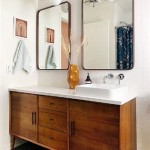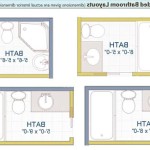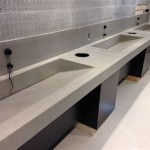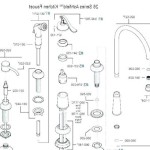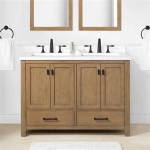Preschool Bathroom Sinks in Singapore: A Comprehensive Guide
Selecting appropriate bathroom sinks for preschools in Singapore requires careful consideration of several factors, ensuring the health, safety, and developmental needs of young children are met. The selection process extends beyond mere aesthetics, encompassing aspects such as ergonomics, hygiene, durability, and compliance with local regulations. This guide provides a comprehensive overview of considerations for preschool bathroom sinks in Singapore.
Ergonomics and Accessibility for Young Children
The ergonomic design of preschool bathroom sinks is paramount. Children’s physical dimensions differ significantly from those of adults, necessitating fixtures specifically designed for their use. The height of the sink is a crucial factor. Sinks that are too high require children to strain, potentially leading to discomfort and an aversion to proper handwashing. Conversely, sinks that are too low can encourage slouching and back problems.
Ideal sink height for preschool children typically ranges between 50 to 60 centimeters (20 to 24 inches). This allows children with varying statures to reach the faucet and basin comfortably without needing to stand on stools or stretch excessively. The depth of the sink basin is also important. A shallow basin prevents water from splashing excessively, which can be both messy and a safety hazard. A depth of around 10 to 15 centimeters (4 to 6 inches) is generally suitable.
Furthermore, the placement of faucets should be within easy reach of children. Lever-style faucets are often preferred over knob-style faucets, as they require less strength and dexterity to operate. Automatic faucets, activated by motion sensors, are an excellent option for promoting hygiene, as they minimize the need for physical contact and reduce the spread of germs. However, these faucets must be calibrated to dispense water at an appropriate temperature to prevent scalding.
Accessibility considerations also extend to children with disabilities. Under the Building Control Regulations in Singapore, preschool bathrooms must adhere to specific accessibility standards. This includes providing sinks with sufficient knee clearance for wheelchair users and ensuring that faucets are operable with one hand and do not require tight grasping, pinching, or twisting.
Hygiene and Material Considerations
Maintaining a hygienic environment is critical in preschool settings to minimize the spread of infections. The choice of sink material significantly impacts its ease of cleaning and resistance to bacterial growth. Several materials are commonly used for preschool bathroom sinks, each with its advantages and disadvantages.
Stainless steel is a popular choice owing to its durability, resistance to corrosion, and non-porous surface, which makes it easy to clean and disinfect. Stainless steel sinks are typically more expensive than other options, but their longevity and low maintenance requirements can make them a cost-effective solution in the long run.
Vitreous china is another commonly used material. It is a porcelain enamel that is fired at high temperatures to create a smooth, glossy surface. Vitreous china sinks are relatively inexpensive and easy to clean, but they are more prone to chipping and cracking than stainless steel sinks. The smooth surface is resistant to staining and bacterial growth, making it a hygienic option.
Solid surface materials, such as Corian, are also gaining popularity. They are non-porous, seamless, and can be molded into various shapes and sizes, allowing for customized designs. Solid surface sinks are durable and easy to maintain, but they can be more expensive than vitreous china sinks.
Regardless of the material chosen, regular cleaning and disinfection are essential. Preschool staff should establish a routine cleaning schedule, using appropriate disinfectants to kill germs and prevent the spread of illness. The use of soap dispensers with antimicrobial soap is also recommended.
The sink basins should be designed to minimize water pooling, as stagnant water can harbor bacteria. Sloped sink bottoms and efficient drainage systems are crucial for maintaining hygiene.
Durability, Safety, and Regulatory Compliance
Preschool environments are subject to high levels of use and potential misuse, making durability a key consideration when selecting bathroom sinks. Robust construction and impact-resistant materials are essential to withstand the rigors of daily use by young children.
Reinforced mounting systems are important to ensure that the sinks are securely attached to the wall or countertop. It is also advisable to choose sinks with rounded edges and corners to minimize the risk of injury from sharp edges. Faucets should be securely attached and designed to prevent children from easily removing or damaging them.
Water temperature control is a critical safety concern. Scalding is a significant risk for young children, whose skin is more sensitive to hot water than that of adults. Thermostatic mixing valves (TMVs) should be installed to limit the maximum water temperature to a safe level, typically around 43 degrees Celsius (109 degrees Fahrenheit). These valves automatically blend hot and cold water to deliver a consistent and safe temperature, preventing scalding accidents.
In Singapore, preschools must comply with the guidelines and regulations set forth by the Early Childhood Development Agency (ECDA) and the Building and Construction Authority (BCA). These regulations cover various aspects of building design and construction, including accessibility, hygiene, and safety. Compliance with these regulations is essential for obtaining and maintaining a license to operate a preschool.
The ECDA regulations may specify requirements for the number of sinks per student, the height and accessibility of sinks, and the availability of handwashing supplies. The BCA regulations outline specific requirements for accessibility, including the provision of accessible sinks for children with disabilities.
Regular inspections and maintenance are crucial for ensuring ongoing compliance with these regulations. Preschools should conduct routine checks of bathroom fixtures, including sinks, faucets, and TMVs, to identify and address any issues promptly. Maintenance records should be maintained to document these inspections and any necessary repairs or replacements.
The design of the bathroom should also promote safety and hygiene. Clear signage should be posted to remind children to wash their hands properly. The bathroom should be well-ventilated to prevent the buildup of moisture and mold. Adequate lighting is also important for ensuring visibility and safety.
Choosing the correct preschool bathroom sinks involves a multifaceted approach. Factors such as ergonomics, hygiene, durability and safety must be carefully weighed against budget constraints and aesthetic preferences. Prioritizing the health, safety and wellbeing of the children must remain the primary focus in this decision-making process.
The selection of preschool bathroom sinks in Singapore requires a thorough understanding of the specific needs of young children and the regulatory requirements governing preschool environments. By carefully considering ergonomics, hygiene, durability, and safety, preschools can create bathroom facilities that promote health, safety, and independence for all children.

Geberit Bambini For Schools Nurseries North South East Asia

Kinderland S Workplace Centres Demonstrates Best Practices Getting Your Child Ready For A New School Year Infant Care Singapore Leading Preschool

Bibinogs Preschool K A Updated June 2025 11 Photos 559 Bit Timah Rd Singapore Preschools Phone Number Yelp

5 Exclusive Tips On Preschool Bathroom Renovation

5 Terrible Mistake To Avoid Renovating Preschool Bathroom

5 Terrible Mistake To Avoid Renovating Preschool Bathroom

10 Creative Sensory Sink Play Ideas For Children Miraculove

Kindergarten Restroom Images Browse 3 Stock Photos Vectors And Adobe

Bathroom Nursery School Photographed From Above Stock Photo Chiccododifc 71509449

Geberit Bambini For Schools Nurseries North South East Asia
